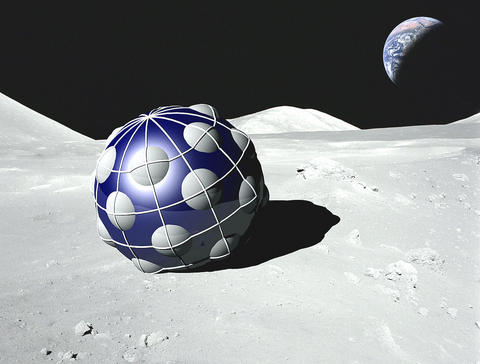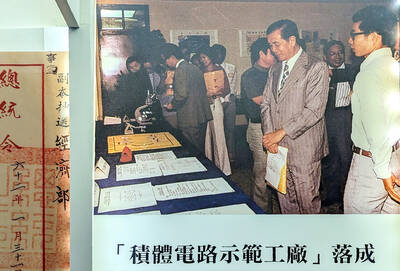What do reality TV shows like Survivor and America's Next Top Model have in common with an insurgent method of stimulating useful innovations around the world?
It may be hard to believe that watching Tyra Banks drive aspiring models to the breaking point can provide insight into how to accelerate technological change.
Well, pinch yourself.

PHOTO : NY TIMES NEWS SERVICE
Popular reality shows indeed provide a way to understand the logic behind a new wave of contests in technological innovation. Both types are driven by head-to-head competition among unknowns. And the winner takes all - and is celebrated in the process.
A research agency for the government is using the model to spawn a new generation of driverless cars. Google is sponsoring a US$20-million-grand-prize race to the moon and back for commercially feasible spacecraft.
And this week, the newest contest - for a drivable, affordable car that gets 42.51km per liter - will be formally started at the New York International Auto Show. Sponsored by the X Prize Foundation, which is also running the lunar contest, the car contest is really two in one. In 2010, there will be a winner in the "city" category, which permits three-wheelers, and another in a category for four-wheel, four-seat cars.
"Human beings do some of our best work under the pressure of competition," says Peter Diamandis, chairman of the X Prize Foundation, based in Santa Monica, California, "Cooperation is wonderful, but it doesn't lend to breakthroughs or true innovations."
The usual way that companies spawn advances is to employ staff members or contractors to create them. The market then rewards the winning products. The problem, however, is that the market sometimes delivers just incremental improvements, especially in areas of energy, transportation and health. Breakthroughs are imagined, but not mass-produced.
Contests, which come with a deadline, aim to create a sense of urgency, conjuring up a "race" mind-set that harks back to the Cold War. After World War II, competition between the US and the Soviet Union fostered technological races in space and weapons, for instance. In 1927, Charles Lindbergh made aviation history winning a US$25,000 prize for being the first pilot to fly nonstop between New York and Paris.
Why have contests proliferated in recent years? "Tycoons have come into it," says Stewart Brand, president of the Long Now Foundation, which aims to raise awareness on solving long-term technological problems. The X-Prizes, for instance, are funded by such wealthy people as Elon Musk, a co-founder of PayPal, and Stewart Blusson, a Canadian who made a fortune in diamonds.
The sponsor rewards only the winner. The contestants invest their own money, thus expanding the pool of capital devoted to the field. Taking a page from the playbook of professional sports, contestants can often attract sponsorships.
Skeptics say that prizes often merely confirm what has already been done in the lab - and that too often they shower attention on the contest's founders.
"Creating useful innovations ought to be self-rewarding," says Robert Friedel, a historian of technology at the University of Maryland.
Although the contests have flaws, they bring innovators into the open. That can inspire young inventors - and tip off venture capitalists to the next big thing. Indeed, venture capitalists watch these contests to get leads on whom to fund.
"These contests and prizes become a quality-control mechanism," says Yogen Dalal, a managing director of the Mayfield Fund, a venture capital firm in Menlo Park, California.
To be sure, the devil is in the details. The creation of a great contest echoes the lesson of the Goldilocks story: Make the goal not too difficult, but not too easy.
As more innovation contests are introduced, the more obvious goals may already be met. For instance, there is already an all-electric car made by Tesla Motors of San Carlos, California - going into production Monday - that promises to achieve more than 42.51km per liter. But the Tesla car is only a two-seater.
The complexities of creating the auto prize illustrate a wider problem of how to come up with ever more novel tests of human ingenuity over time. Brand of the Long Now Foundation predicts that contests will soon pursue "things we truly think of as impossible."
Brand's wish list includes machines that defy gravity or that allow us to read the minds of other people.
Hey, Tyra Banks, are you available for an afternoon of Vulcan mind-melding?

Oct. 27 to Nov. 2 Over a breakfast of soymilk and fried dough costing less than NT$400, seven officials and engineers agreed on a NT$400 million plan — unaware that it would mark the beginning of Taiwan’s semiconductor empire. It was a cold February morning in 1974. Gathered at the unassuming shop were Economics minister Sun Yun-hsuan (孫運璿), director-general of Transportation and Communications Kao Yu-shu (高玉樹), Industrial Technology Research Institute (ITRI) president Wang Chao-chen (王兆振), Telecommunications Laboratories director Kang Pao-huang (康寶煌), Executive Yuan secretary-general Fei Hua (費驊), director-general of Telecommunications Fang Hsien-chi (方賢齊) and Radio Corporation of America (RCA) Laboratories director Pan

President William Lai (賴清德) has championed Taiwan as an “AI Island” — an artificial intelligence (AI) hub powering the global tech economy. But without major shifts in talent, funding and strategic direction, this vision risks becoming a static fortress: indispensable, yet immobile and vulnerable. It’s time to reframe Taiwan’s ambition. Time to move from a resource-rich AI island to an AI Armada. Why change metaphors? Because choosing the right metaphor shapes both understanding and strategy. The “AI Island” frames our national ambition as a static fortress that, while valuable, is still vulnerable and reactive. Shifting our metaphor to an “AI Armada”

When Taiwan was battered by storms this summer, the only crumb of comfort I could take was knowing that some advice I’d drafted several weeks earlier had been correct. Regarding the Southern Cross-Island Highway (南橫公路), a spectacular high-elevation route connecting Taiwan’s southwest with the country’s southeast, I’d written: “The precarious existence of this road cannot be overstated; those hoping to drive or ride all the way across should have a backup plan.” As this article was going to press, the middle section of the highway, between Meishankou (梅山口) in Kaohsiung and Siangyang (向陽) in Taitung County, was still closed to outsiders

The older you get, and the more obsessed with your health, the more it feels as if life comes down to numbers: how many more years you can expect; your lean body mass; your percentage of visceral fat; how dense your bones are; how many kilos you can squat; how long you can deadhang; how often you still do it; your levels of LDL and HDL cholesterol; your resting heart rate; your overnight blood oxygen level; how quickly you can run; how many steps you do in a day; how many hours you sleep; how fast you are shrinking; how